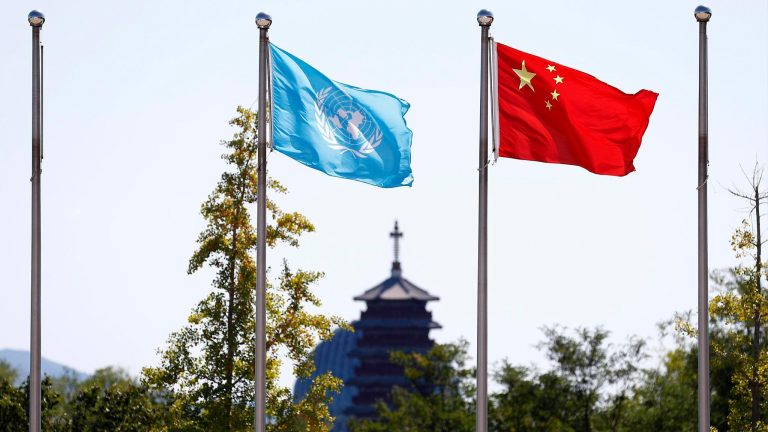Evidence shows that fragile peace is a significant handicap to prosperity in many parts of the world. In the horn of Africa, a region where peace has mostly been elusive, the Horn of Africa peace and development conference (HoAPDC) emerges as a link between China’s Global Security Initiative (GSI) and the UN SDG-16 on peace, justice and strong institutions. The HoAPDC framework reframes regional stability not as an end but as the engine for broader regional transformation.
Amidst a challenging global environment, China by localizing solutions engages and encourages nations to find collaborative solutions to regional problems as a prerequisite for realizing shared prosperity. First held in Addis Ababa in June 2022, the third edition of the (HoAPDC) was hosted in Kampala at the end of July 2025. A major distinction between this meeting is that it followed the Non-aligned movement (NAM) and was hosted by Uganda- during the country’s chairmanship of the group; especially after solemn commitment were made in regard to security at the last NAM summit. But we might wonder what is special about the Horn of Africa anyway.
The horn of Africa, is a region consisting of several east African countries including Ethiopia, Eritrea, Somalia, Djibouti, Sudan, Kenya and Uganda. The region’s geopolitical significance stems from its strategic placement between; the River Nile, on the interior, both the Red sea and Indian ocean on the exterior but also providing access to the Mediterranean ocean. So, the horn of Africa is not merely a strategic maritime access point to Africa’s interior but also Europe and Asia.
conversely, the region has also been one of Africa’s prime security hot spots over the decades. For instance, today, aside from Al Shabaab being a salient threat in Somalia, there is unrest in Sudan’s Darfur region, simmering ethnic tensions in Ethiopia etc. This exists against a historical backdrop of civil war in Somalia, but also insurgent attacks on development projects exemplified by the tragedy of July 2007 when Ogaden National Liberation Front (ONLF) insurgents attacked the Zhongyuan oil field in Ethiopia resulting into 74 fatalities and the kidnapping of 7 Chinese nationals. Such incidents not only threaten foreign investments but also blight national prospects for prosperity.
Today, China is not only the continent’s biggest trading partner, but also a major source of Foreign Direct Investments (FDI) on the continent. Based on this, some analysts for example the Netherlands institute of international relations have advanced the argument about China’s vested interest in extending its global influence and ensuring that its nationals operate in a secure environment. However, African countries- nations of the horn of Africa in this case have an even stronger impetus as the past has proved how disruptive unrest and a lack of security can be to development.
Certainly, China is not standing by to wait for peace to reign over Africa before it can make the decision to cooperate with the continent. Instead as a trailblazer and champions of shared prosperity, China knows from its experience of rapid modernization amidst a stable peaceful environment that peace and security do indeed catalyze development. Undeniably, this idea has existed at the core of the horn of Africa peace and development conference since its inception as noted by former Ethiopian president Teshome Mulatu at the 2022 edition. This time, the message was carried by China’s special envoy to the region Xue Bing as he stressed a need to explore the potential for cooperation, safeguarding common security and deepening exchanges of government experiences.
Viewed as the global security initiative (GSI) in its implementation phase, the HoAPDC is like its parent underpinned by strong commitments to maintaining security in both traditional and nontraditional ways, common comprehensive cooperative sustainable security, and stresses dialogue as the best approach to resolving disputes between nations. The goal of the platform is to find lasting solutions to security challenges of the horn of Africa as an inroad to the overarching goal of shared prosperity. Regional cooperation on peace and security fosters a secure environment- an ingredient for sustained growth in the horn of Africa. In turn the sought sustainable security would have substantial benefits to the global economy as the international crisis group found in the past that; onboard security experts, insurance, and detours to avoid the horn of Africa in 2010 alone cost the global economy $18 billion.
More importantly, the HoAPDC prescribes a solution to a region that’s considered to be a global security hotspot on account of its assemblage of a high security threat index, geostrategic importance, and ongoing conflicts. Unrest in the Sudan, the Al Shabaab terrorist enterprise in Somalia and the occasional piracy activities continue to have spillover ramifications for the region whether it is by an influx of displaced persons, or jaundiced economic growth. Accordingly, the UN agency for refugees UNHCR operational update March 2025 estimates that between the horn of Africa and the Greatlakes region, upwards of 24.5 million people either live as refugees or in internally displaced people’s (IDP) camps. Therefore, this framework represents more than a practical step towards achieving UN SDG-16. By guaranteeing stability it unlocks both regional economic activity and trade which in turn form a reliable launch pad for regional economic growth as a pathway to shared prosperity.
In a global environment characterized by a superfluity of security and economic challenges, the horn of Africa peace and development conference is a step on a continuum of China’s steadfast march towards its vision of building a global community of shared future for mankind. Through such frameworks, historically unstable regions like the horn of Africa are inspired to engage in constructive dialogue to find localized solutions to regional challenges. And these solutions, by limiting outside interference are more likely guarantee win-win outcomes.
The writer is a research fellow at the Development Watch Centre.



